Virtual Tours Are Here to Stay Even While Mass Vaccination Is Underway


One pastime that gained traction over the past year are virtual tours. There’s no shortage of “best in class” lists and suggestions on various publications. As iconic sites such as the Taj Mahal started to launch virtual tours (which made many a holiday or birthday gift list), technology companies such as Amazon, Airbnb and Google got into the act, often pitching these options as doing good abroad while doing so from the safety of home.
So, even if mass vaccination continues apace worldwide, there’s no reason to believe these virtual tours will still go away anytime soon. We still don’t know if new strains of COVID-19 will occur, and this week’s news that France went into a third nationwide lockdown shows how this insidious this virus is. While the usual popular destinations like Las Vegas and Cancun are already seeing a resurgence in visitors, for lesser-known destinations, it will take a long time for those tourist dollars to return to those communities.
Nevertheless, virtual tours still present opportunities for communities and local tourism sites to showcase what they have to offer. Take a historic site in Lebanon, a country where most visitors – as in expats living in the Middle East – visit either to see the country’s beaches, the coastal archeological site Byblos or the Cedars of God. Of course, upon landing in Beirut, many travelers are happy to only indulge in the city’s bacchanalian nightlife (or get some plastic surgery done!). In any event, most of Beirut’s hotels arrange tours that usually cram in a few highlights that include Byblos, the caves at Jeita Grotto and a religious site or two – leaving out other worthwhile destinations.
Speaking of Bacchus, the Greek god of wine, the city of Baalbek in Lebanon’s Baqaa Valley, about 40 miles northeast of Beirut, has set some hopeful expectations on a new app that highlights the city’s legacy. Known in Greek and Roman times as Heliopolis, Baalbek is home to stellar archeological sites (as shown above) that include temples dedicated to Bacchus and his boss, Jupiter. Now these sites are on an app that can be a joyful time suck for archeological and history geeks.

The virtual tours of these sites are the result of a partnership between Flyover Zone Productions - which has also created virtual tours of the cultural heritage sites worldwide - the German Archaeological Institute and the Lebanon’s cultural ministry. The end result is an app that can be downloaded on a smartphone, tablet or laptop. Users can take a narrated tour of Baalbek as it exists today, or they can be transported to 215 A.D., when the city reached its economic and cultural zenith.
The app, Baalbek Reborn, also has a giving back component. The app supports Arcenciel, an NGO in Lebanon that offers support to the country’s underprivileged and marginalized communities. Baalbek Reborn includes a direct link so that users can make a donation to support restoration efforts, which include vocational training given by heritage experts, efforts to rebuild Beirut's lost traditional workmanship and in turn help preserve the craftsmanship and the centuries of history Lebanon’s neighborhoods still hold.
Even as more consumers adopt a “book-now, figure it out later” mentality with their travel plans, one thing we learned last year is that the global pandemic has shown no shortage of curve balls. Projects like Baalbek Reborn can provide tourist destinations a chance to land on travelers’ radar – and if they have a sense of purpose behind them, can help drive social enterprise as well.
Image credit: Fred Nassar/Unsplash
Why Weather Data Should Drive Global Climate Change Solutions
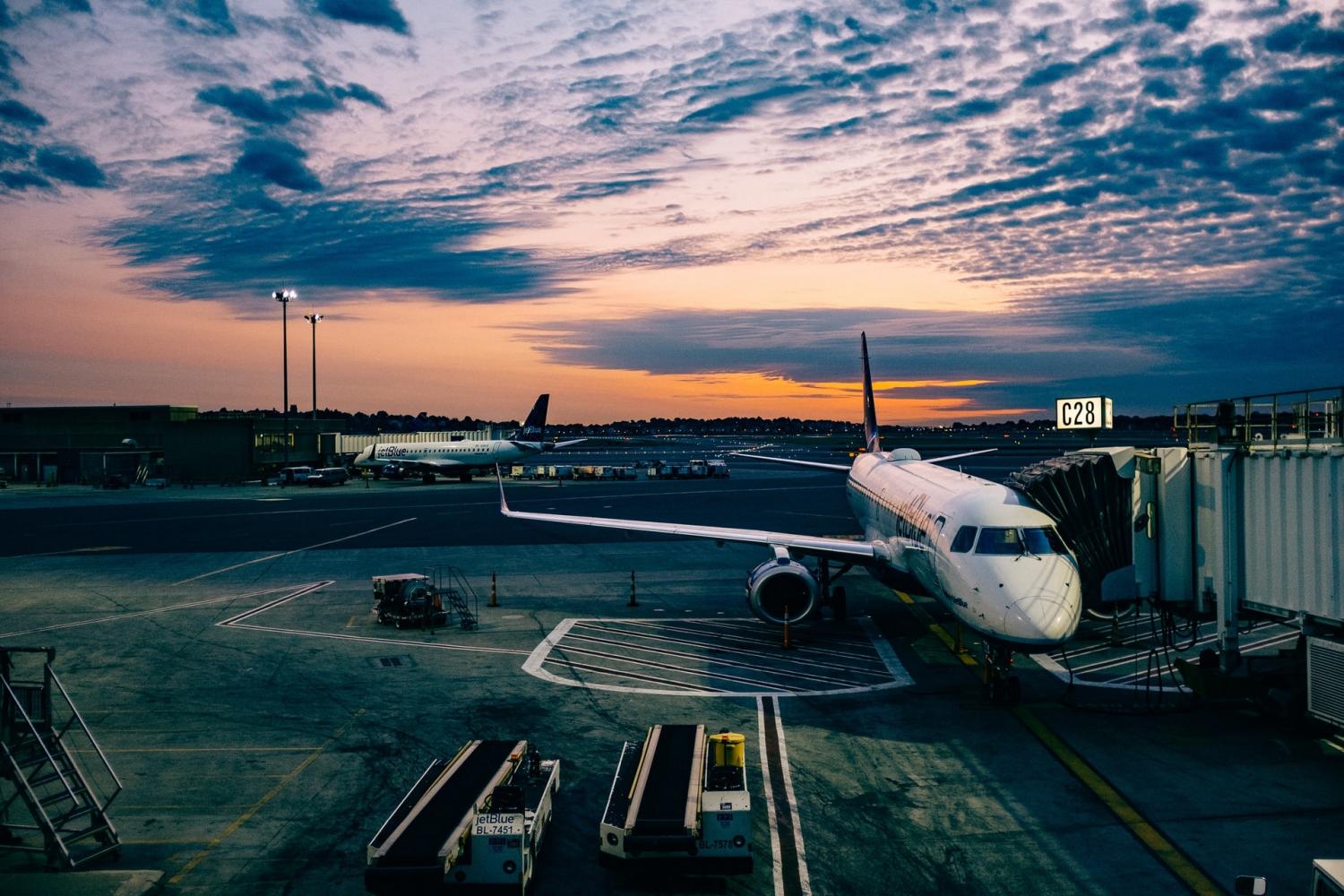

With the Biden administration taking office, climate change and man-made environmental impacts are once again at the forefront of American policy. President Biden is reestablishing the country’s commitment to reducing carbon emissions, investing heavily in renewable energy and rejoining the global stage on climate policy, starting with the Paris Climate Accord. What is missing from the conversation, however, is how weather information and analytics can aid in helping mitigate risks today caused by climate change and can also reduce emissions further reducing future impacts.
Conversations around climate change typically center around such things as increasing sea and surface temperatures, as well as the rise of extreme weather events. A new United Nations report shows climate-related disasters jumped 83 percent: from 3,656 events during the 1980-1999 period to 6,681 in the past 20 years, with major increases in extreme weather events.
But we should also be discussing how using weather analytics can be part of the solution for tackling climate change. Weather is the fuel of the future. Look at supply chain logistics, as an example. Supply chains account for 80 percent of greenhouse gas emissions in most consumer goods categories; insight from weather information can help minimize those emissions.
Weather insights for transportation can help address climate change
Americans spread more than 48 billion pounds of salt on roadways to keep roads and motorists safe during winter weather. Growing evidence shows that the chemicals contaminate drinking water and harm the environment. Road pavement forecasting, which uses a combination of high-resolution forecasts, road sensors and environmental assessment of temperature influences on road sections, can reduce unnecessary treatment. Instead of treating an entire roadway, road maintenance crews can choose to treat selected locations along a road where there are cold-spot road sections, or they may decide whether treatment is necessary at all. Using this method, the Maryland Department of Transportation has used 53 percent less salt over the past five seasons.
Reducing aviation emissions through the use of weather insights
Weather analytics can also help reduce emissions in the aviation sector. Historically, routing decisions have been made using worst-case weather scenarios which are more operationally restrictive. Advanced forecasting capabilities offer more accurate, detailed, and specific data for flight management. Having near-pinpoint accuracy in detecting dangerous weather conditions, such as clear air turbulence, allows pilots to make smaller, calculated shifts in their route rather than having to fly hundreds of miles out of their way to avoid a speculated event, saving not just time, but fuel as well.
Specific weather insights for long-range route planning, as well as for real-time tactical flight management, may mean the difference between not loading extra fuel as a precaution for alternative landing options, or circling an airport before eventually landing, ultimately contributing to a reduction of greenhouse emissions.
Shipping industry and weather-optimized routing
The shipping industry is among the leading producers of sulfur emissions worldwide. Burning bunker fuel accounts for almost 90 percent of global sulfur emissions and the 15 largest ships in the world produce more sulfur each year than all cars put together. In 2020 the International Maritime Organization introduced new regulations to combat the impact of sulfur emissions by enacting a worldwide 0.5 percent sulfur emission cap. New equipment and alternative fuels will aid in this directive, as does weather analytics. Studies show that weather-optimized routing can reduce emissions up to 4 percent and reduce fuel consumption up to 10 percent, depending on the type of vessel, the season, and the conditions. Route-planning is established prior to voyage but is an ongoing dynamic process. If there is bad weather ahead, sophisticated algorithms that utilize information about the ship and its capabilities and the weather effects on that specific ship can make numerous calculations and provide one or more alternatives for the mariner to optimize a route.
These climate change solutions are global solutions, not specific or confined to a region. In today’s connected world we monitor global weather patterns and model for localized impact. We have weather observations on the ground, in the sky with weather balloons, drones and airplanes, and above the earth with satellites. The Internet of Things (IoT) provides additional weather data, such as sensors in cars and marine buoys and sensors on turbines in wind farms. This robust data, combined with the confluence of ongoing weather and climate research and advanced weather models and technology, makes it possible to improve supply chain’ impacts on the environment.
As President Biden and his administration act to address climate change and environmental impact, it’s a must that they bring the science of weather to the table: not just in the context of response and mitigation to extreme weather events, but also in how we can utilize our existing depth of expertise and application of weather analytics to reduce impact on the environment.
Image credit: Ashim D’Silva/Unsplash
Joe Biden’s EV Love Letter to The Big 3 Automakers and Their Unionized Employees
With the infrastructure and electrification focus of the new American Jobs Plan, President Joe Biden has set the stage for the “Big 3” U.S. automakers to enjoy a thriving market for their new electric vehicles in the years to come. For those concerned about the car-buying habits of millennials, an affordable zero-emissions car could be just the ticket to attract a new generation of climate-aware drivers who benefit from other elements of the new plan, including well-paying union jobs, subsidized child care and other policies that lift working households.
Why millennials often don’t buy cars
Several years ago, auto industry observers began to notice a concerning trend in which younger drivers were not buying cars. Affordability and urbanization were cited as leading factors.
“…less than half of potential drivers age 19 or younger had a license in 2008, down from nearly two-thirds in 1998,” noted reporter Jordan Weissmann in a 2012 article. “The fraction of 20-to-24-year-olds with a license has also dropped. And according to CNW research, adults between the ages of 21 and 34 buy just 27 percent of all new vehicles sold in America, a far cry from the peak of 38 percent in 1985.”
Silicon Valley entrepreneur Anthony Seba dialed those concerns up to an 11 in 2018, when he co-authored a report suggesting that electrification and autonomous technology would lead future generations of U.S. drivers to rely on fleet vehicles and ride sharing. He predicted that personal car ownership in the U.S. would practically evaporate by 2030.
The more recent picture is actually more complicated than that, and far less gloomy for the automakers. In April 2019, for example, MIT’s Sloan Management School published a lifespan study indicating that the dip in the rate of car ownership is a temporary phenomenon. The study did find that car ownership is lower for millennials early in life, but over time the rate of car ownership evens out.
COVID-19’s effect on the automakers
The automakers still have to be wary of new trends that make personal cars less necessary, such as the rising popularity of e-bikes and the creation of walkable communities. In addition, The American Jobs Plan also eases pressure on car ownership by improving access to mass transportation.
On the other hand, the COVID-19 crisis has brought a new appreciation for the personal car as a mobile living, working, and entertainment space, not just a means of getting from one place to another.
The COVID-19 crisis has also sparked a renewed interest in moving outside of urban areas or purchasing a second home. That trend could also motivate additional car buying.
The American Jobs Plan provides ample support for a rise in personal car ownership through its pitch for road and bridge improvements.
Connectivity and the personal car
The American Jobs Plan also includes a substantial emphasis on rural broadband and affordable broadband. That could further incentivize car ownership, by bringing full Internet connectivity to an estimated 30 million Americans who live in areas without adequate services.
“With the 1936 Rural Electrification Act, the federal government made a historic investment in bringing electricity to nearly every home and farm in America, and millions of families and our economy reaped the benefits,” the American Job Plan notes. “Broadband internet is the new electricity. It is necessary for Americans to do their jobs, to participate equally in school learning, health care, and to stay connected.”
Range anxiety no more
That reference to the Rural Electrification Act is no accident. It brings up the elements of the American Jobs Plan that support electric vehicle ownership.
Between new electric vehicle charging stations, new transmission lines, more renewable energy capacity, grid resiliency initiatives and more funding for energy storage and clean tech R&D, the American Jobs Plan covers a sprawling web of initiatives that support electric vehicle makers and EV owners.
The charging station network is especially important, because it assures EV owners of access to electricity everywhere they go.
In addition, the American Jobs Plan doubles down on Biden’s commitment to support the electric vehicle market through the purchasing power of the federal government. Much attention has focused on the Postal Service fleet of 230,000 vehicles, but the Department of Defense also has the power to move markets. The Department of the Army alone has a fleet of 225,000 vehicles.
More support for union workers
The Big 3 automakers are Ford, GM, and the recently renamed Stellantis Group, which includes the Chrysler, Ram Trucks, Jeep and Dodge brands. Together, the automakers’ history with unions has had its ups and downs, but that reservoir of experience should put them in a relatively good position to grow their business within the strong pro-union policies envisioned by the American Jobs Plan.
In particular, GM has a head start through its ambitious electrification commitment. The company has also proven its interest in a holistic approach to selling electric vehicles, including support for thousands of new EV charging stations, a role in building out the nation’s renewable energy infrastructure, and the promotion of more affordable EV models.
GM also burnished its social responsibility image during the COVID-19 outbreak by working with unions and health professionals to ensure worker safety at its auto manufacturing plants, while making a sharp pivot into PPE and ventilator production.
The outcome under strong pro-union federal policies is less certain for startups, including the high-profile Elon Musk-led venture Tesla Motors. Tesla has become notorious for anti-union policies in its U.S. operations, and the company’s handling of the COVID-19 crisis did not earn it high marks.
On the other hand, Tesla itself was the beneficiary of a federal initiative that echoes some key themes of the American Jobs Plan. In 2010 Tesla was among the first companies to receive funding through a newly created loan guarantee program administered by the U.S. Department of Energy.
The loan program was created through a 2005 Act of Congress, which aimed to kickstart energy-related innovation in the U.S. Telsa used its $465 million loan to establish an electric vehicle factory in Fremont, California. The new factory launched Tesla far ahead of the Big 3 in the race to get zero emission autos on the road.
If the company needs a similar level of support to keep up with the emerging competition from the Big 3 automakers, the pro-union elements of the American Jobs Plan could force a culture shift for Tesla and others that have resisted unionization.
Image credit: Ford Media Relations
How the Pandemic Offers Lessons for Taking on Climate Change
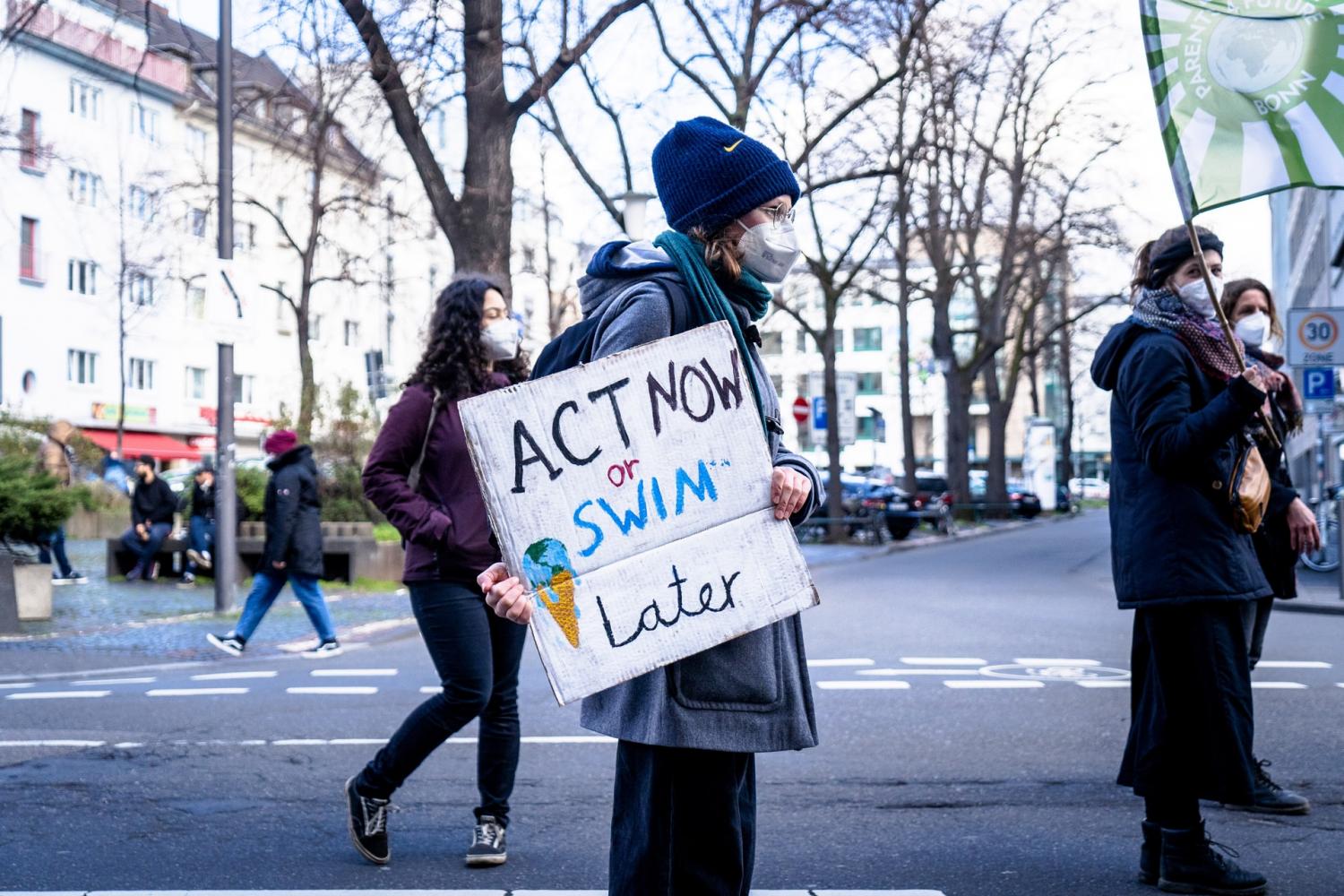

Can the lessons learned during the pandemic be used by governments and businesses to prepare for and mitigate the impacts of climate change? This was the question put to a panel of experts at the recent Sustainability Week, a virtual conference sponsored by The Economist. The discussion, moderated by Daniel Franklin, an executive editor at The Economist, was far ranging but focused on a few key messages.
Respect for science and scientists
Nicholas Stern, from The London School of Economics and author of the seminal Stern Review, suggested that the experience of the pandemic has helped increase the respect for science among the general public. “People now realize that there are things which are quite complicated [like climate change] where the science nevertheless has been clear and strong, and the pandemic has been another strong example of that,” he said.
Another positive outcome from the pandemic is that scientists and medical professionals have become much more media savvy. Asked to explain complex topics to the public through countless TV appearances, they have become much better communicators with some even becoming media personalities. This acceptance for the need to become more media savvy could bolster climate scientists’ arguments as they make the case for climate action to the general public.
Greater acceptance for government action and interventions
The pandemic may have also shifted the public’s willingness to accept government intervention in response to a crisis even when it means radical changes to lifestyles, according to Sinead Lynch, U.K. Country Chair for Royal Dutch Shell.
“The fundamental case for government intervening swiftly and engaging with business and communities to really drive urgent progress when it’s needed is clearer now to the general public,” she said. This could mean the public will accept a stronger role for government intervention when it comes to addressing climate change impacts.
Seeing risks and vulnerability within the supply chain
The pandemic has shined a light on the vulnerabilities of supply chains and pushed forward the importance of risk management for businesses, said Tanya Steele, Chief Executive at WWF-UK. She described the pandemic as “a horrible and painful dress rehearsal for what potentially could come” with the impacts of climate change.
“One of the big game changers from the pandemic has been for businesses to see the risks and vulnerabilities they couldn’t even have imagined that could be magnified many times over in tackling climate change,” she added.
Not all communities are affected equally by climate change
The reality that some communities have been hit harder than others on many different levels has been another key lesson learned from the pandemic. “The pandemic showed us that we’re all in the same storm, but we’re not all in the same boat,” said Sinead Lynch.
Kevin Petty, Director of Science for IBM's The Weather Company, added, “we need to pay attention to those most vulnerable populations. Again we’ve seen disproportionate impacts on different parts of the population and that’s something that we will also see as a result of climate change and we have to consider how we address that.”
As our response to climate change offers the opportunity to move us toward a net-zero society, there will also be an unequal impact on employment opportunities in various communities, added Ms. Lynch. “We know there will be jobs created but also jobs lost, so understanding early on how that will play out and get ahead of that with skills training and investment can make the difference for a just transition,” she said.
No return to business as usual
One thing is for certain and met with universal agreement from the panel: We will not return to business as usual. We’ve fundamentally changed the way we work, the way we travel, and the way we learn. Holding this conference virtually, rather than in-person, is a clear example of this shift.
So, will the experience of one crisis encourage organizations to do more to prepare for the next one? For the most part, the panel was optimistic that the pandemic has accelerated many of the trends needed to get to net-zero.
At the same time, the panel acknowledged some of the differences between the two crises. For example, climate change happens more slowly and gradually and is more subject to “crisis fatigue,” so it may be harder to get people’s attention. And probably more importantly, in the words of Mark Carney, the former Governor of the Bank of England, “you can’t self-isolate from climate change.”
Still, Kevin Petty from IBM concluded his remarks on a positive note: “Through the pandemic we have demonstrated the world’s capacity to respond to a major problem quickly and efficiently, there shouldn’t be anything keeping us from responding to climate change the same way.”
Image credit: Mika Baumeister/Unsplash
What to Expect from Sustainable Packaging Innovation in 2021

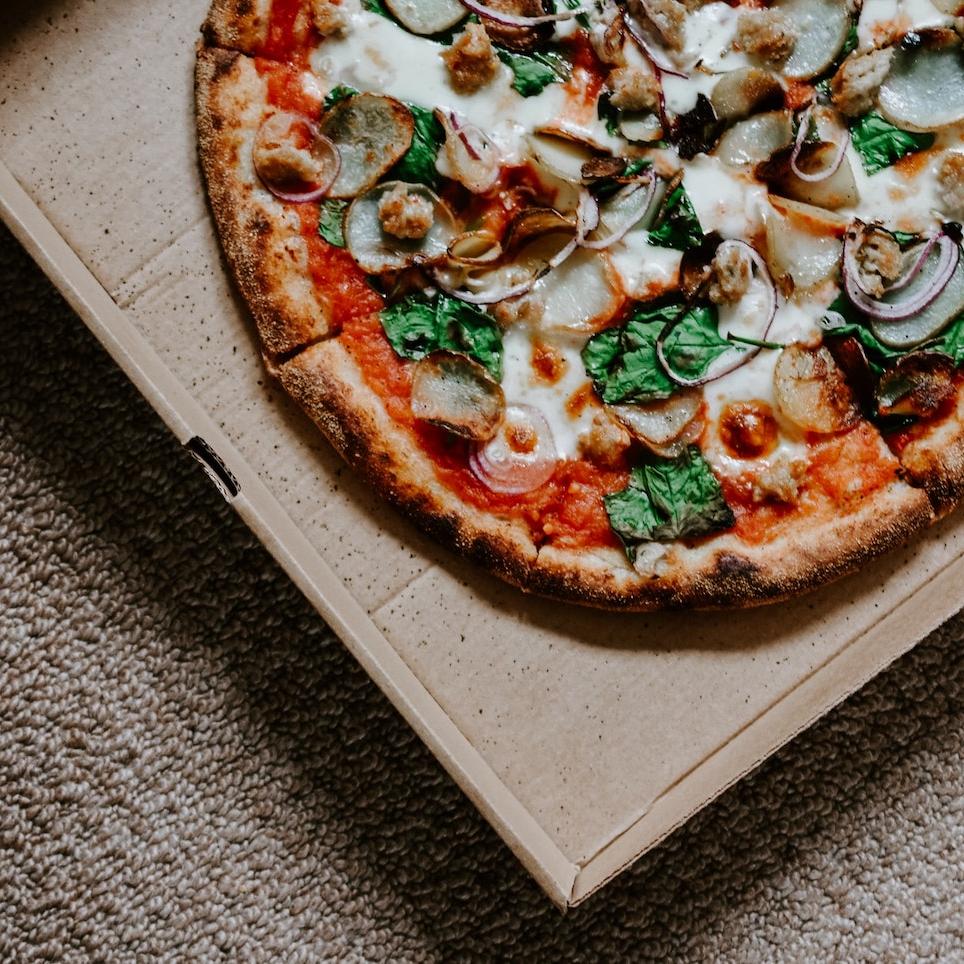
Consumers and companies alike are growing increasingly concerned of the effects of climate change and are now more “waste aware.” In a recent survey, nearly 75 percent of consumers worldwide said they would be willing to pay more for products in sustainable packaging. As interest grows, so does innovation. Sustainable, and even circular, packaging options hit the market monthly.
The challenge: Addressing both safety and sustainability
One company responding to this shift while driving new trends in packaging is Atlanta-based WestRock, a paper-based packaging solutions company that employs more than 50,000 people with annual revenues of more than $17 billion. “Sustainability is not about compliance or a trend, it’s how we do business,” said Brandi Colander, who was appointed chief sustainability officer of WestRock in November of 2020.
One year into the global pandemic, it has become clear that while consumers prioritize health and safety, they don’t want it to be at the expense of sustainability. When it comes to packaging, they insist on both. A recent WestRock survey of consumers confirms more than eight in 10 consumers said it is important for brands to find a way to balance safety and the environment as they design packaging.
Rethinking recycling and the paper supply chain
WestRock and other companies in the packaging sector are developing alternatives to plastic that offer the same performance, flexibility and strength, made from a renewable resource while also recyclable.
There are some caveats, Colander explained.
“WestRock is working to provide innovative packaging solutions, many of which replace plastic and are a sustainable alternative,” Colander told us. “And while many consumers think that packaging made from recycled material is more sustainable, the fact is that new wood fiber must be added. Sustainable forestry is a key part of the sustainable packaging story.”
Sustainable packaging all starts with the supply chain
Chief among the details many don’t know: Wood-based fibers can only be recycled five to seven times on average before deteriorating, meaning that eventually they can no longer be a part of the wider paper and cardboard manufacturing process, Colander said. Virgin fiber must be incorporated to increase the longevity of the fiber cycle in packaging. With that in mind, WestRock says responsibly managed virgin fibers play a pivotal role in promoting greater sustainability and performance, a critical reason why the company says it prioritizes sustainable forestry.
To that end, WestRock relies on the relationships it has with small, private landowners here in the U.S. “The act of sourcing fiber from responsibly managed forests is what ultimately preserves the forest, which might otherwise be cleared for alternate uses. The benefit is not only in forest conservation, but also in the replanting of new trees which throughout their lifetime, help to sequester carbon from the atmosphere,” Colander said.
The occasional harvesting of timber benefits everyone: WestRock has a steady supply of timber, while revenues help landowners. “Effectively working toward a more circular economy comes down to partnerships and patience,” Colander added.
Reinventing the functionality of paper and cardboard
Years of research and development by companies such as WestRock are advancing circularity. New designs in fiber-based packaging are increasingly reusable, recyclable or compostable — helping to transform the consumer-packaged goods (CPG) industry. Many CPG companies are now acting to minimize their waste footprints and reimagine alternatives to reduce dependence on plastics.
Paper-based alternatives to plastic
WestRock is in the middle of this evolution. To start, consumers have long experienced frustration from hard-to-open clamshell packages. One of the company’s products offers a replacement for plastic blister clamshell cases with a simpler blister card. This paperboard alternative offers what the company says is a strong, flexible, and more sustainable alternative to the conventional blister seal and clamshell choices on the market – and it also features the strong tear resistance that retailers demand to deter theft.
Then, there is the question of how to encase products like deodorants, lip balms and other oil-based products that have long been packaged in plastic. Here, some of the more unconventional yet promising packaging innovations could soon become mainstream across the health and personal care products sectors. WestRock’s answer is its EcoPush product line, an all-paperboard package that can store oil-based solids such as balms, perfumes and common toiletries. It could soon gain traction with food companies as well, Colander said. “The really cool thing we’re doing here is solving for the exterior materials as well as the interior, replacing plastics through and through with a lined, oil-resistant paper barrier,” she explained.
Finally, for higher-end products such as cosmetics, WestRock offers the Paper Palette, which Colander describes as a fresh alternative to traditional, plastic-based makeup palettes. “I expect with the long-lasting effects of the pandemic, we’re going to see a greater demand for fiber-based alternatives, particularly in the cosmetics sector, as brands try to solve for in-store sampling in new, sustainable, economical and hygienic ways,” she told us.

Consumers must be part of this conversation
These new developments give Colander a sense of optimism, but she insists there is still plenty of work to do when it comes to informing and educating consumers.
For example, WestRock has already invested considerable resources in challenging the assumption that the ubiquitous cardboard pizza box is not recyclable. In fact, the company recently completed a study that concluded normal amounts of residual grease and cheese do not affect the manufacturing of new paper and cardboard products from those recycled fibers.
As consumer shopping habits continue to shift, there may also be renewed focus on effective curbside residential recycling programs. WestRock says it invested $2 million in the October upgrade of its Marietta, Georgia, recycling facility to improve the performance of single-stream recycling. “Moving forward, we’ll continue eyeing areas for investment, educating stakeholders and developing innovative sustainable packaging options that improve circularity,” Colander said.
This article series is sponsored by WestRock and produced by the TriplePundit editorial team.
Image credit: WestRock and Hello I'm Nik/Unsplash
Biden’s 30 GW Offshore Wind Power Plan Scores Unique Public-Private Partnership


When President Joe Biden announced a new offshore wind power plan earlier this week, much of the attention focused on the ambitious goal of building 30 gigawatts’ worth of offshore turbines along the northeastern region of the Atlantic coast to power 10 million homes by 2030. That may sound like a pipe dream, but it is doable from a technology standpoint. Left to be settled are questions about the impact on coastal communities.
Offshore wind and economic development
The new offshore wind plan illustrates how the Biden administration has embraced an approach to climate action that climate advocates have known for a generation: The clean technology of today is a powerful creator of new jobs and new economic activity.
Reducing carbon emissions is still a primary goal of the new plan. When the 30 gigawatts are fully built out, the U.S. Department of Energy expects to cut the nation’s carbon emissions by 78 million metric tons.
In addition, the end goal is to deploy a total of 110 gigawatts or more in offshore turbines by 2050. The Biden administration anticipates that work in the northeast will model best practices and supply chain efficiencies that will benefit other regions.
Entwined with the climate impact is job creation and economic development. The numbers cited by the Energy Department for the 2030 goal are impressive:
“The goal will spur $12 billion in capital investment annually, leading to the construction of up to 10 new manufacturing plants for offshore wind turbine components, new ships to install offshore wind turbines, and up to $500 million in port upgrades. Achieving the 2030 goal would support 77,000 jobs, including more than 44,000 workers employed in offshore wind and nearly 33,000 additional jobs in community supported by offshore wind activity.”
Job creator, not job killer
In past generations, new energy projects typically created new jobs while steamrolling over existing jobs and tearing the fabric of local communities - and sometimes displacing them entirely. Coal power plants, strip mines and hydropower plants are notorious examples from the 20th century, with effects that still ripple out today. More recently, new oil pipelines, mountaintop coal mining and oil and gas fracking have been the focus of attention.
Clean power is also not immune from impacts on employment. The new offshore wind power plan recognizes that U.S. coastal communities are already humming with activity that could be affected. Fishing, for example, is a leading concern. Offshore wind power’s potential impacts tourism, on national defense systems and shipping lanes also need to be addressed.
The Biden plan features a multiagency effort to work with academic institutions and local stakeholders on strategies that “align ocean renewable energy deployment and technology development with community values.”
Participating in the effort are the Energy Department’s Wind Energy Technologies Office and its Water Power Technologies Office, along with the Commerce Department’s NOAA, and the Northeast Sea Grant Consortium, which is a regional academic research initiative administered by NOAA.
As part of the consortium, MIT has been tapped to lead a $1 million funding program for projects that “catalyze proactive socio-economic and technology research for offshore renewable energy planning in the region.”
Apparently, the effort recognizes that a one-size-fits-all approach to offshore wind development will not pass muster with local stakeholders. Instead, MIT emphasizes a flexible approach that opens the door for other forms of offshore energy, including hydrokinetic energy harvesting devices that leverage the motion of currents, tides and waves.
A public-private partnership to save the planet
One unique feature of the new plan is a first-of-its-kind public-private agreement that joins NOAA with the global wind power developer Ørsted, which has already taken a firm grip on wind power in the U.S. The agreement calls for partnering on data collection and technology development.
NOAA already collects a considerable amount of data related to climate change and other environmental impacts, but there are still gaps in its knowledge base. Under the agreement, Ørsted will share the data it collects when it assesses offshore sites for project development.
The data collection areas include air quality, water quality, and emissions; biological communities; meteorology; coastal and ocean currents, circulation and waves; hydrographic services and mapping; and physical oceanography.
In combination with NOAA’s public data, the collaborative effort is expected to help “plan and ensure the effective deployment, sustainable operation and maintenance, and the efficient use of weather-dependent and oceanic renewable energy technologies and infrastructure.”
More offshore wind power for the U.S.
As for why the Biden administration selected the U.S. northeast to launch its long-term offshore wind 110-gigawatt goal, that’s a good question. After all, there is offshore wind potential all along the massive U.S. coastline, and the Great Lakes also offer opportunities.
Part of the answer is technology-driven. The Pacific coast, for example, is not suitable for conventional fixed-platform offshore wind turbines. New floating wind turbine technology has emerged on the market, but project development along the Pacific coast is years away.
Another consideration is driven by bottom line and competitive factors. Those are in play along the Gulf coast, where wind resources are less than optimal. A recent study by the Energy Department’s National Renewable Energy Laboratory assessed offshore wind resources among the five Gulf Coast states and drew scenarios under which offshore wind could be economically viable, but there are still no projects in the pipeline.
Last, but certainly not least, is the political angle. During the Obama administration, energy policy in most of the Atlantic coast states from New Jersey on south hinged on Republican governors and Republican-controlled state legislatures, which favored fossil energy. New Jersey and several others have since recovered their footing under new leadership, but as a group they are lagging behind.
In contrast, the northeastern Atlantic coast states from New York to Maine established an early interest in promoting the U.S. offshore wind industry. Rhode Island was first to achieve success as the host of the Block Island wind farm, which is the nation’s first, and still the only, offshore turbine array in commercial operation.
Coincidentally or not, President Biden’s new Commerce Secretary, Gina Raimondo, served as Governor of Rhode Island from 2015 to 2021. The Block Island project was already in the pipeline when Raimondo took office, and construction began during her first year. She has had a first-hand opportunity to observe the economic activity stirred by a single wind farm with just 30 megawatts in capacity.
With 30 gigawatts of offshore wind power now in sight, the potential for new jobs and new activity has grown exponentially.
Image credit: Nicholas Doherty/Unsplash
Major League Baseball Called to Account After Georgia Passes Voter Suppression Law
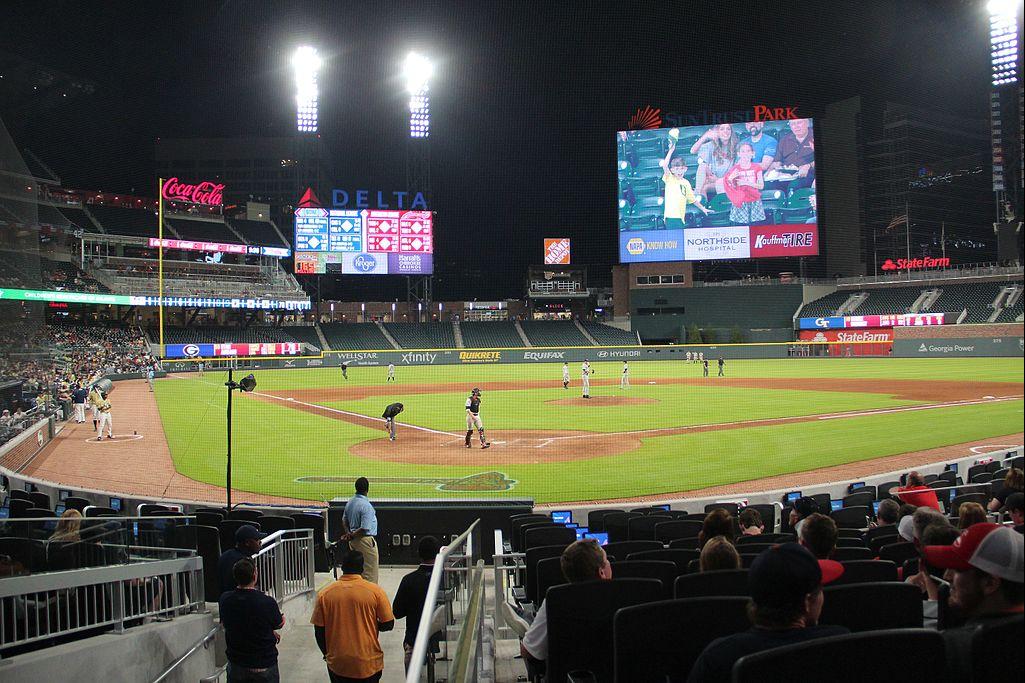
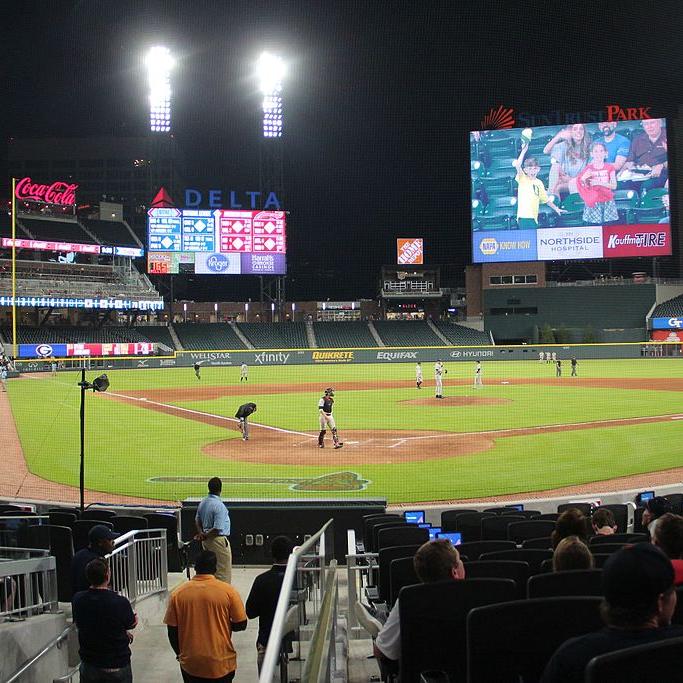
Editor's note: On April 2, MLB announced it would pull the 2021 All-Star Game out of Atlanta as a response to the Georgia state legislature's passage of the controversial voter suppression bill.
Voting rights advocates have pressured leading corporations in Georgia to lobby against new voter suppression laws, but they have been curiously reluctant to enlist the state’s professional sports stakeholders in the cause. That may be about to change, as the Major League Baseball Players Association (MLBPA) has indicated it may be open to advocating more forcefully on behalf of voting rights.
Will they, or won’t they?
Georgia has become the focus of media attention on voting rights, due to its relentless pursuit of new laws that make it harder for people of color, along with many other voters, to cast a ballot.
The city of Atlanta, Georgia is scheduled to host the 91st annual MLB All Star Game this year, providing voting rights advocates with a high-profile event to leverage for their case. In an interview last week with Boston Globe, MLBPA Executive Director Tony Clark indicated that the players have been closely following the voter suppression movement in Georgia, and they are willing to have a conversation with the league on moving the All Star Game.
Realistically, the probability of shifting the 2021 All-Star game out of Georgia is slim to none. For starters, more than 250 voter suppression bills have flooded the legislatures in two dozen other states so far this year. That shrinks the options for an alternative location considerably.
Florida, for example, is currently considering the same type of prohibition on food and water distribution mandated by the new Georgia law. Regardless of the stated intent, the effect of such a law is to foster onerous, health-threatening conditions for people who live in areas shorted on polling place, and are forced to wait for hours in long lines to vote.
On the other hand, there is a precedent.
“In 2016, the NBA decided to move its 2017 All-Star Game out of Charlotte, N.C., a reaction to a bill enacted by the state that limited anti-discrimination protections,” wrote Globe reporter Michael Silverman. “In explaining the decision, the league said it was acting on its ‘longstanding core values,’ which ‘include not only diversity, inclusion, fairness, and respect for others but also the willingness to listen and consider opposing points of view.’
Editor's note: Be sure to subscribe to our Brands Taking Stands newsletter, which comes out every Wednesday.
MLB makes much of its voting rights advocacy, stating that “the greatest civic duty of any American is to exercise the right to vote and actively participate in the electoral process – the bedrock of a functioning democracy” and that “each free and fair election provides an opportunity to shape our nation and work toward upholding its values.”
The MLBPA could persuade MLB to step up its game, and they can all but certainly count on support from voting rights activist and NBA star LeBron James, who has taken steps to become a part owner of the Boston Red Sox. James recently acquired a stake in the team’s parent company, Fenway Sports Group. The deal does not automatically confer ownership status for James on the team, but it does make him, along with his business manager Maverick Carter, among the first Black owners in MLB history – with Magic Johnson being the first.
The LeBron James factor and fighting back against voter suppression
James could become a significant factor in any conversation between the MLBPA and Major League Baseball over voting rights advocacy, building on his role in co-founding the More than a Vote organization last year in support of the Black Lives Matter movement.
On March 5, More than a Vote launched the new "Protect Our Power" voting rights campaign in concert with the NBA's All-Star Weekend.
“As part of the launch, More Than A Vote is partnering with the Black Voters Matter Fund, Fair Fight Action, Georgia NAACP and the New Georgia Project to focus on legislation in Georgia that would restrict access to voting, with the state emerging as the epicenter of the battle over voting rights,” CBS News reported.
Notably, the campaign features a video ad, narrated by James, that ties the new voter suppression bills to the failed insurrection of January 6, underscoring that white supremacy, and white on Black violence, have been leading features of race-based voter suppression throughout the nation’s history right on up to the present day.
Next steps for pro sports in the Peach State
James’s stake in the Red Sox is not a direct financial arrangement, and he will need approval from Major League Baseball before his team ownership status is official. It’s possible that the sensitivity of the situation will be a factor as he weighs next steps for More than a Vote.
However, Georgia Governor Brian Kemp forced his hand last week, when he signed a “sweeping” voter suppression bill last week that put renewed pressure on the state’s corporate citizens to act.
In addition, Major League Baseball has already set itself up as part of the pressure campaign due to its partnership with the Civic Alliance, which bills itself as a nonpartisan, business-supported voting rights organization that is “working together to build a future where everyone participates in shaping our country.”
Though top Georgia-based companies like Coca-Cola, Delta, and Aflac are not part of the Alliance, the organization’s list of 1,119 members includes many familiar national brands.
Though the All-Star Game may remain in Georgia, it almost certain to be the nexus of a renewed push for voting rights activity this summer, and leading Georgia corporations, including Coca-Cola, Delta, and Aflac, will feel the heat.
Image credit: Thomson200/Wiki Commons
Consumers Tell Brands to Board the COVID-19 Vaccine Train


As Krispy Kreme scored praise — and some shade — for its pledge to give customers showing proof they got the COVID-19 vaccine a free donut, a majority of Americans believe that silence should not be an option for brands when it comes to encouraging everyone to get vaccinated.
At least, that’s according to the Harris Poll and Adweek, which together polled 1,100 Americans to get their points of view on how brands should respond to the vaccination effort.
It’s not a contest: 60 percent of those surveyed said that brands are obligated to encourage anyone and everyone to be vaccinated to stop the spread of COVID-19.
And when it comes to the simple act of sharing information about getting vaccines, consumers were even more enthusiastic: 70 percent of them said they are behind brands sharing information about where and when Americans can get vaccinated.
Editor's note: Be sure to subscribe to our Brands Taking Stands newsletter, which comes out every Wednesday.
“Still, there was one middle-class caveat,” wrote Kathryn Lundstrom of Adweek. “A majority of one segment of respondents with a household income between $50,000 and $75,000 disagreed that non-healthcare brands should encourage [COVID-19] vaccinations. So while most consumers overall support brands endorsing vaccines, it’s important to know your audience.”
That caution also applies to how companies decide to share information, especially when it comes to social media. While 73 percent of baby boomers said they trust brands when they share vaccine information, that ratio drops noticeably from generation to generation: Only 37 percent of Gen Xers said they would trust brands over the ongoing chatter about the COVID-19 vaccine occurring on social media.
Hence there is an opportunity to build trust with boomer consumers, who tend to be less fickle when it comes to brand loyalty. Three-quarters of baby boomers surveyed revealed they were most supportive of brands who shared information about the COVID-19 vaccine, and almost 70 percent said they would buy from brands that offered any promotions to vaccinated consumers. So, those lines to get donuts could get long, Krispy Kreme!
Of course, it's also important to remind brands to walk the walk when it comes to supporting the nationwide vaccination campaign, even though the data suggests the U.S. population is getting vaccinated at a steady, even rapid rate. Considering the risks that new COVID-19 strains could cause yet another surge, any contribution to this effort would be a huge plus. “In addition, corporate leaders can deploy their trusted brand names to help make vaccines available to the general public as soon as supplies become available,” 3p’s Tina Casey wrote last month.
Image credit: Start Digital/Unsplash
The Obscure Government Office That Launched Tesla Is Open for Business (Again)


The U.S. Department of Energy (DOE) has already given President Joe Biden a head start on fulfilling his climate action campaign promises. The question now is whether or not the DOE will follow through on Biden’s social and environmental justice pledge, and the agency’s dormant Loan Programs Office (LPO) - which counts Tesla as part of its legacy - could hold the answer.
The Loan Programs Office and the Valley of Death
The DOE is mainly known as a research organization, with 17 national laboratories and a vast, global network of academic institutions and private sector stakeholders under its belt.
Somewhat lesser known is the agency’s role in providing financial assistance to help innovative energy technology cross the “Valley of Death” that separates promising work from the commercial market. When private sector dollars shy away from unproven technology, the DOE can step in with a financial and technical assist.
In support of that mission, the Loan Programs Office was created during the Bush administration through Title XVII, Section 1703 of the 2005 Energy Policy Act. It provides the DOE with broad authority to guarantee loans for innovative projects that serve critical needs, build markets, and create jobs.
As a funder of new technology, the LPO has failure built into its DNA. The program is designed as a balanced portfolio that allows wiggle room for the high risk that comes with high rewards.
On the failure side is the solar manufacturing firm Solyndra. The company was among the very first to apply for a loan in December 2007, just a few months after the loan office released its first round of solicitations. The loan was approved in 2009, under the Obama administration. Unfortunately, Solyndra’s plans for opening a U.S. factory fell victim to global manufacturing forces and it went bankrupt in 2011. A 2015 DOE investigation also accused officials in the company of misleading the LPO on key points.
The LPO success stories that nobody talks about
When Solyndra went bankrupt, Republican members of Congress and their allies in the media seized the opportunity to slam the Obama administration’s clean energy policies. With the “right wing noise machine” dialed up to an 11, Solyndra became a bleating, blaring symbol of failure and waste that persisted all through the Obama administration and continued into the Trump years.
Somewhat ironically, Republican members of Congress were initially eager to see the loan program in action. The DOE cites Republican U.S. Representatives Hastert, Burr, Barton and Simpson, who went on record in public hearings during the Bush administration in 2007 - and during the Obama administration in 2010 - to complain about the slow pace of loan approvals.
They should have kept cheering, as at least two of today’s leading U.S. companies benefited enormously from the LPO.
One is Ford. The company famously refused assistance through the 2009 Recovery Act, but it did win a $5.9 billion loan from LPO that enabled it to upgrade 13 factories in six states.
The other, of course, is Elon Musk’s Tesla Motors. Like Solyndra, Tesla was also among the first to benefit from LPO support. It earned a $465 million loan in 2010 on the strength of its electric vehicle (EV) technology. That would seem to be a high-risk proposition, considering GM’s short-lived dip into the commercial EV field during the 1990s. Nevertheless, by 2013 Tesla repaid the loan in full. And by 2014, the company employed more workers than any other automaker in its home state of California.
The stock price of Tesla has seen some ups and down since then, and the company’s anti-union stance (and Musk’s penchant for Twitter) have provided fuel for critics. Nevertheless, Tesla’s success helped to pave the way for GM and other leading auto makers to pivot into EV technology.
Meanwhile, Tesla has grown considerably since 2014. The company fared reasonably well during the global pandemic, and auto industry observers anticipate that the company’s new service model, and new Tesla factories in Texas and Germany, will add tens of thousands of new jobs to its rolls in the coming years.
Long after Tesla, the LPO tees up for the U.S. wind industry
In 2019 the Bipartisan Policy Center issued a report summarizing LPO’s overall success:
“LPO projects have transformed American energy infrastructure and accelerated growth in clean energy and electric vehicle markets. According to DOE’s website, LPO projects have created or saved over 56,000 American jobs across all regions of the country and have generated over $50 billion in total project investment. Further, LPO projects have prevented 34.7 million metric tons of carbon dioxide emissions and saved 1.7 billion gallons of gasoline and counting.”
The Bipartisan Policy Center also notes that LPO can take credit for kickstarting the utility-scale solar industry in the US.
Now it looks as if the U.S. wind industry is ready to share in all the winning. Earlier this week, the Biden administration announced that LPO stands ready to award a $3 billion pot of loans to offshore wind industry stakeholders, with the aim of building 30 gigawatts in offshore wind capacity by 2030.
The DOE touts the economic impact of the program, explaining that:
“…the goal will spur $12 billion in capital investment annually, leading to the construction of up to 10 new manufacturing plants for offshore wind turbine components, new ships to install offshore wind turbines, and up to $500 million in port upgrades. Achieving the 2030 goal would support 77,000 jobs, including more than 44,000 workers employed in offshore wind and nearly 33,000 additional jobs in community supported by offshore wind activity.”
The DOE adds, “It would also unlock a pathway to deploy 110 GW or more of offshore wind by 2050, supporting 135,000 total jobs, including 77,000 in offshore wind and 58,000 induced in communities with offshore wind activity."
What about social and environmental justice?
With so much at stake, the LPO is the one to watch for fulfillment of Biden’s social and environmental justice pledges.
For all its success over the years, the LPO has not imparted a culture of social responsibility. For example, the Tesla battery factory in Nevada has become a poster boy for the negative impacts of large-scale manufacturing on local communities, and its new battery factory under construction in Germany has already raised concerns over environmental impacts as well as labor organizing issues.
The ongoing non-union stance at Tesla has also drawn the attention of the National Labor Relations Board (NLRB). Last week, the NLRB concluded a years-long investigation of Tesla’s Fremont, California factory with a finding that the company violated labor laws when it fired a union-supporting employee. Musk’s Twitter habit also factored into the decision.
The NLRB does not have the authority to issue fines or other punishment, but the decision underscored the renewed strength of the labor movement in the U.S., which President Biden has publicly endorsed.
Looking forward, earlier this month Energy Secretary Jennifer M. Granholm set a new direction when she tapped Jigar Shah for the position of LPO Executive Director. On Shah’s impressive clean tech resume is membership in the business organization E2, which advocates for environmentally beneficial economic policies.
“E2 supports policies that advance diversity and equity and ensures that the benefits of a clean economy – jobs, savings, opportunities, health – are extended to all communities,” the organization states. “Environmental justice is considered in every policy on which we work, and diversity and inclusivity are tantamount in everything we do.”
E2 has also recognized that it needs to work on its own diversity and equity issues as well.
“Internally, we will prioritize making our membership more representative of America as a whole and addressing internal biases that can keep us from fulfilling our goals,” E2 says.
As the wind industry loan applications come pouring into LPO, look for Shah to keep environmental, equity and diversity issues in focus.
Image credit: Vlad Tchompalov/Unsplash
Empowering Women and Social Enterprise in India so Both Can Thrive During the Pandemic


Photo: In the Indian state of Karnataka, the social enterprise Project Defy work to create “nooks,” i.e. learning environments where learners can learn new skills and design their own education programs.
In its 72 years of independence, India has shown its unprecedented prowess in building a modern, democratic nation. It has lifted millions out of poverty, is one of the fastest growing economies in the world and has increased its global influence by becoming a member of the G20 and the BRICS. More recently, it has played a central role in providing the world with COVID-19 vaccines as it has one of the largest pharmaceutical manufacturing capacities in the world.
However, what’s so unfortunate and saddening for a country making such strides on a global scale is that its gender gap is big, and it continues to grow wider.
The 2020 Global Gender Gap report says that India is the only country in the world where the economic gender gap is larger than the political gender gap. Only 25 percent of women participate in the labor market, one of the lowest participation rates across the globe. And, female estimated earned income is a meager one-fifth of male income, which also contributes to them among the lowest wage earners in the world.
Social change in women’s status is crucial for India to continue its progress; empowering them economically can play a significant role in realizing women’s rights and narrowing the gender gap. An example of an ecosystem that is playing an increasingly important role in economically empowering women is the social enterprise space.
“Social enterprise is a really powerful force for women’s empowerment and it’s still under-utilized,” says Mark Richardson of Social Impact Consulting, who led the research of a British Council report on the role of social enterprise in supporting women’s empowerment in India.
The report found that social enterprise is playing a growing role in women’s empowerment by developing women’s skills, providing employment and giving women a voice in their community. According to the report, of women who started a social enterprise 80 percent felt an increased sense of worth, 82 percent reported increased confidence and 49 percent said it made them feel they could make their own choices.
According to Amani Institute India, nearly 25 percent of all social enterprises in India are led by women, compared to less than 10 percent of commercial small and medium enterprises that have a woman at the helm. “Women in India are often subject to discrimination from their families, communities, and investors when compared to their male peers. This issue is even more severe for women social entrepreneurs because social entrepreneurship can be stigmatized as being unprofitable,” said Shehzia Lilani, the Country Director of Amani Institute India.
Assessing the needs of Indian women social entrepreneurs, the U.S. Consulate General in Chennai helped to launch the Women’s Global Development Prosperity initiative (WGDP). The program establishes a platform that can give women social entrepreneurs access to information, capital, mentorship and other such opportunities they lack in social and commercial enterprises.
And so was born the Women in Indian Social Entrepreneurship Network (WISEN), a platform to support female social entrepreneurs from all over India. Designed and facilitated by Amani Institute India, in collaboration with ANDE India (Aspen Network of Development Entrepreneurs), and with funding support from the U.S. Consulate General in Chennai, WISEN is the first of its kind formal network.
“I am a first-generation graduate from a marginalized community. I had very few opportunities for my personal and professional development. I joined this national level network to explore my potential and learn from a team of women who crossed several milestones in their life. From Amani’s capacity building sessions, I realized the importance of my wellbeing, and the energy I had,” said M. Padmavathi, a managing trustee of the nonprofit COROAT and member of WISEN.
“As the primary capacity building partner for WISEN, we designed a 6-month, online program that offered 40 women entrepreneurs a platform to access trainings, mentoring and coaching sessions, collaborative projects and community building initiatives,” said Lilani.
ANDE brought in subject matter experts who delivered masterclasses for the women entrepreneurs. “Formal peer support groups have been known to be great pillars of support in an entrepreneur’s journey, and research showed us that women entrepreneurs did not enjoy access to the same kinds of networks as their male counterparts. This made the creation of WISEN a necessary step to strengthen the ecosystem for women entrepreneurs,” elaborated Sucharita Kamath, India Chapter Manager at ANDE.
Furthermore, the pandemic added another threat to the survival of social enterprises, increasing the necessity of support networks to overcome challenges.
“With the disruptions caused due to the COVID-19 pandemic, the business and organizational realities of all 40 women entrepreneurs changed. Keeping this in mind, we redesigned the WISEN program with the objective of making it relevant and immediately applicable for the selected women entrepreneurs. We wanted to create a self-sustaining network for women entrepreneurs who were leading their organizations through a pandemic,” Lilani added.
Megha Bhagat, a co-founder of the social enterprise Project Defy and another member of WISEN, said, “Networking with a purpose in an ecosystem built for men is far less cumbersome with women networking platforms like WISEN. Entrepreneurship has a gendered experience and finding groups that have women entrepreneurs holding each other up is quite a task. WISEN is an attempt to change that, to allow the gendered experience to find a brilliant circle of trailblazers,”
“We received over 215 applications from which we selected 40 entrepreneurs for the program that represented diversity in region, sector, organizational maturity and experience within the cohort. 41 percent of the entrepreneurs ran non-profit organizations, 51 percent ran for-profit organizations and the remaining had hybrid business models. Some organizations were as young as two years and some had over 10 years of existence. This led to fantastic opportunities for cross-pollination and experience sharing within the cohort. We will continue to actively recruit new members on a quarterly basis,” concludes Lilani.
WISEN is currently looking for new partners to help carry the network forward and provide additional resources to its members.
Image credit: Project Defy